In this blog post, Rishabh, a student of Guru Gobind Singh Indraprastha University, New Delhi and pursuing the Company Secretary Course by ICSI, describes child rights in India. The author takes into account several legislations that protect the rights of a child.
Introduction to Child Rights
A child means every human being below the age of eighteen years unless, under the law applicable to the child, the age of majority is attained earlier[1]. A nation’s children are a “supremely important national asset”, and the future well-being of a nation depends upon how its children grow and develop[2]. It is the duty of the state to look after a child to (or “intending to”) ensuring full development of its personality[3]. To achieve this goal, a state must grant certain rights to the children. In India, rights of citizens including that of children have been directly or indirectly provided for by the Constitution of India. We shall first discuss in brief, the United Nations Conventions on Rights of the Child (hereinafter, CRC), 1989 to which India is a signatory.
CRC and India
Adopted by the United Nations in 1989, the CRC is an international agreement legally binding on the parties signatory to it. It has incorporated in its various articles rights of children without any discrimination whatsoever. It was ratified by India on 11 December 1992. It has a preamble setting out different principles the CRC is built upon.
It is based on four basic principles:
- Non-discrimination (Article 2)
- Best Interest of the Child (Article 3)
- Right to Life Survival and Development (Article 6)
- Right to be Heard (Article 12)
The provisions of the CRC have been categorised as:
- PART I (Article 1-41): It sets out the rights of children and obligations of governments. The rights can further be categorised as:
- Survival Rights: the right to life of child and access to basic necessities to existence such as adequate food, shelter, standard of living and medical requirements.
- Development Rights: the right to education, to practice the religion of own choice and cultural activities, freedom of thought and conscience, to play and leisure and to access to information.

- Protection Rights: rights that protect children from abuses which may be consequential to several kinds of circumstances, such as children subject to procedures of criminal justice system, children in employment, children who are refugees, children who have undergone abuse or exploitation.
- Participation Rights: rights of children to participate in activities of the society, especially matters that may affect their life, to assemble peacefully and to join associations.
- PART II (Article 42-45): It contains provisions regarding implementation of the provisions of the CRC.
- PART III (Articles 46-54): It includes provisions for signing the convention by parties and rules and procedures thereafter for the purpose of ratification, enforceability, amendment, denouncement, etc. of the convention.
Three Optional Protocols to the CRC have been introduced which are:
- Optional Protocol to CRC on Sale of Children, Child Prostitution and Child Pornography.
- Optional Protocol to CRC on the involvement of Children in Armed Conflict.
- Optional Protocol to the Convention on the Rights of the Child on a Communications Procedure.
As of now India has not signed the third optional protocol.

How to report a child abuse
- The first and foremost step to be taken for a child in distress is giving moral support to him or her. It is essential for children to be supported and brought back into their comfort zone if they have been subjected to abuse.
- Police may be contacted on their hotline number, i.e., 100 for immediate assistance. Thereafter, a complaint can be made with the Police by lodging a FIR at the nearest Police Station.
- The Police, upon lodging of the FIR, starts the investigation if such cognizable offence as reported was committed under the jurisdiction of the Police Station where FIR was lodged.
- If the cognizable offence was not committed under the jurisdiction of the said Police Station, the police shall register a zero FIR and send it to the Police Station having jurisdiction over the matters of the place where the offence was committed. The Police Station with appropriate jurisdiction commences the investigation.
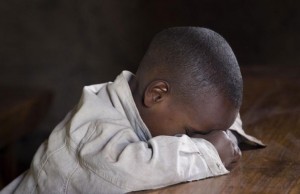
- Photographs or video clips or voice recordings of the child abuse may be taken as evidence and shared with Police in order to strengthen the case against the accused. Such kind of evidence shall not be circulated, transmitted or made available to anyone except the authorities or the court (for the purpose of proof) in cases relating to sexual offences against the children and identity of the victim shall not be disclosed to the public or unauthorised people.
- If it so happens the police station refuses to lodge an FIR or to record any information, a copy of such information shall be sent to the Superintendent of the Police or the Assistant Commissioner of Police in writing, along with the statement that the approached Police Station refused to lodge the FIR or record the information in question. A copy of the writing must also be sent to the Commissioner of Police, the Deputy Commissioner of Police and the Senior Police Inspector.
- Alternatively, ChildLine can be approached by dialling 1098 to report any child abuse and seek assistance. ChildLine India Foundation is the nodal agency of the Union Ministry of Women and Child Development acting as the parent organisation for setting up, managing and monitoring the CHILDLINE 1098 service all over the country. It is toll-free and 24 hours accessible number.
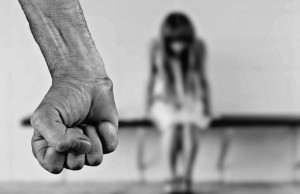
- Various NGOs are working for the protection of rights of children; their help may be taken to secure the rights of children or to bring to justice the offenders who infringe such rights. Some of the reputed NGOs working for the welfare of children are HAQCRC, Cry, etc.
- After official reporting of abuse and lodging of FIR, the matter goes to competent court and case is initiated by the State against the accused.
The contact details of various state departments working for protecting the rights of children can be found by clicking here.
Constitutional Provisions Regarding Rights of Children
The Constitution in its Part III (Fundamental Rights) and Part IV (Directive Principles of State Policy) guarantees under the articles mentioned below, rights to the children of India:
PART III:
- Article 14: Citizens of India, including children, must be treated equally before law and must be given equal protection by the law without any discrimination or arbitrariness.
- Article 15(3): Discrimination is prohibited by the constitution. However, it shall not hold a ground to prevent the state from making special provisions for women and children for their benefit.

- Article 21: No person shall be deprived of his life or personal liberty without due process of law. A person has the right to adequate food, shelter, clothing, etc. Such life shall not mean mere animal existence[4].
- Article 21A: The State shall provide free and compulsory education to all the children falling in the age group of six to fourteen years in such manner as the State may, by law, determine.
- Article 23: Prohibits trafficking in human beings and beggar or any other form of forced labour.
- Article 24: Prohibits employment of children under the age of fourteen years in a factory, mine or in any other hazardous employment.
PART IV:
- Article 39 (e): The state shall thrive to ensure that the tender age of children is not abused and that citizens are not forced by economic necessity to enter avocations unsuited to their age or strength.
- Article 39 (f): The state shall ensure children are given opportunities and facilities to develop in a healthy manner and in conditions of freedom and dignity. It must also be ensured that childhood and youth are protected against exploitation and against moral and material abandonment.
- Article 41: The state is obliged to, within its economic capacity and development, secure provisions for educational opportunities and facilities.
- Article 44: The state shall make all possible efforts to secure a Uniform Civil Code for all the citizens, thereby implying a uniform code for the adoption of children.
- Article 45: The state shall endeavour to provide free and compulsory education to children until they attain they age of fourteen years.

- Article 46: It is the duty of the state to promote the educational and economic interests of weaker sections of the society with special care and therefore, the children therein.
- Article 47: The state is duty-bound to raise the level of nutrition and the standard of living and to improve public health, including that of children.
- Article 51 (c): International laws and treaties shall be respected by the state to every possible extent, including the CRC and its optional protocols, Optional Protocol to CRC on Sale of Children, Child Prostitution and Child Pornography and Optional Protocol to CRC on the Involvement of Children in Armed Conflict.
- Article 51 A (k): It shall be the duty of every citizen of India who is a parent or guardian to provide opportunities for education to his child or, as the case may be, ward between the age of six and fourteen years.
- Article 243G provides for the institutionalisation of child care by seeking to entrust programs of Women and Child Development to Panchayat (Item 25 of Schedule 11).
Right to Constitutional Remedies when Rights of Children are Infringed
If the above mentioned fundamental rights are infringed, the appropriate courts may be approached. The constitution has provisions for constitutional remedies in article 32 and article 226.
- Article 32: A person has right to move to the Supreme Court to protect his fundamental rights. It is also a fundamental right.
- Article 226: A person my approach High Court by virtue of this article to get his rights protected, not necessarily fundamental rights.
The courts, for the purpose of protecting the rights they are authorised to, may issue writs:
- Habeas Corpus: literally translating to “you may have the body”, a person, whether or not a child, who is detained, whether in prison or privately, is directed to be produced before the court. If found that such detention was illegal, he is released.
- Mandamus: meaning ‘we command’, mandamus issued by Supreme Court or High Court orders the lower courts/tribunals/public authorities to perform a public or statutory duty which they are obliged to perform but have failed to do so.
- Prohibition: it is issued by the Supreme Court or the High Courts, to prohibit inferior courts under them from transgressing the limits or powers vested in them.
- Certiorari: it enables a superior court to quash an order already passed by the inferior court/tribunal/quasi-judicial authority.
- Quo warranto: it literally means by what right. It is issued to restrain a person from holding a public office he is not entitled to hold.
The writs may be extended to the lower courts by the parliament.
Since children are unable to access the legal system by themselves, a Public Interest Litigation may be filed in the Supreme Court or the High Courts by a public spirited individual or a non-governmental organization against the Central Government or State Government or any of their respective agencies by the virtue of A.32 and A.226 for protection of the rights of the Children.
Other Legislations/Policies in India
Some of the important legislations and policies in India to safeguard the rights of children are:
- Indian Penal Code, 1860: The Indian Penal Code by its various sections specifically protects children and their rights. Some of these sections are:
- S.83: Nothing is an offence which is done by a child above seven years of age and under twelve, who has not attained sufficient maturity of understanding to judge of the nature and consequences of his conduct on that occasion.
- S.292 & 293: Selling, distribution, publishing, public exhibition or circulation of obscene material such as books, magazines, drawings, paintings, etc. is prohibited under Section 292. Whoever sells, lets to hire, distributes, exhibits or circulates to any person under the age of twenty years any such obscene object as is referred to in Section 292, or offers or attempts so to do, shall be punished more severely.
- S.305: Abetment of the commission of suicide of a person below the age of 18 years is punishable under this section.
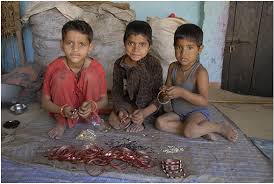
- S.317: Abandonment or exposure of a child for the purpose of abandonment by any of the parents or a person having the care of such child is a punishable offence.
- S.361: This section deals with punishing offenders who kidnap a child (male if below 16 years of age and female if below 18 years of age).
- S.363A: Kidnapping or maiming children for the purpose of begging has been stated to be a punishable offence under this section.
- S.366A: Inducing of a minor girl under the age of 18 years to do any act that may force or seduce her to illicit intercourse with another person is punishable under S.366A.
- S.366B: It is an punishable offence to import a girl under 21 years of age into India from a country outside India or from Jammu and Kashmir intending that she may be forced or seduced to illicit intercourse with another person.
- S.369: Kidnapping a child under the age of 10 years with the intention to steal from such child is an offence.
- S.372 & 373: Selling, buying or hiring a person under 18 years of age for the purpose of prostitution or illicit intercourse with any person, or for any unlawful or immoral purpose is a punishable offence.
- S.375: A man is said to commit “rape” if has sexual intercourse with a woman with or without her consent when she is under the age of 16 years.
- S.376: The section provides for stringent punishments if:
- rape is committed by management or staff of Remand Home or any other place of custody established by law or children’s institution,
- rape is committed upon a woman under 12 years of age,
- gang rape is committed.
- S.376C: When the Superintendent or manager of a remand home or any other place of custody established under law of ‘children’s institution’ induces or seduces a woman into sexual intercourse by taking advantage of his official position, he is entitled to stringent punishment under this section.
These sections specifically protect the rights of children. Other sections applicable to punish offenders for a crime can also be invoked to protect the children against such offenders.
- Guardians and Wards Act, 1890: The act supersedes all the laws regarding guardianship of a child. It is a universal code specifically designed for Muslims, Parsis, Christians and Jews as their personal laws don’t allow full adoption but only guardianship.
- Child Marriage Restraint Act, 1929 (Amended in 1979): It restraints child marriage until the minimum age, i.e. 21 for male and 18 for female, has been attained by them. It applies to the people of all the religions.
- Immoral Traffic (Prevention) Act (Amended in 1986), 1956: This act with respect to children deals with person(s) who procure or attempt to procure any child for prostitution or person(s) who are found with a child in a brothel (it is presumed child has been detained for the purpose of prostitution) and punishes them. It also provides for the due care of rescued children.
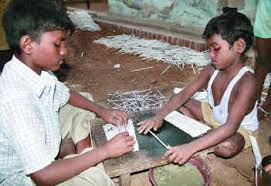
- The Women’s and Children’s (Licensing) Act, 1956: The Act was enacted with an object to protect women and children from exploitation and inhuman activities going on in institutions. It mandates the institutions for women and children to get a license from the licensing authority before establishing or maintaining the institution.
- Probation of Offenders Act, 1958: This act with the help of the Juvenile Justice Act, 2000 tries to ensure that no person under the age of 21 years faces imprisonment.
- National Policy for Children, 1974: It is the first written policy for the children in India. It aims at providing better enforcement of constitutional rights of the children along with those granted by the CRC. Some of the provisions include free education, comprehensive health and nutritious plans, etc.
- Bonded Labour System (Abolition) Act, 1976: The act aims at eradicating the bonded labour system in India which exploits the weaker sections of society, especially children.
- Child Labour (Prohibition and Regulation) Act, 1986: This act regulates the working conditions for children in employment and prohibits working of children in certain kinds of employments.
- National Policy on Education, 1986: The policy is extensive in nature and elementary, university and adult level education, all fall under its scope. It tries to remove inequality by making special provisions for women and other weaker sections of society such as Schedule Castes, Schedule Tribes, etc.
- National Policy on Child Labour, 1987: The act endeavours to eradicate child labour from Indian society wherever necessary.
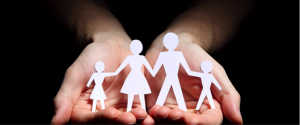
- Juvenile Justice (Care and Protection of Children) Act, 2000: This act is one of the important acts in India for the children in need of care and protection and also children in conflict with the law. It requires that the state provides free legal support to the juveniles, and proper care and protection is provided to those in need. It also calls for a child-friendly approach in adjudication and disposition of matters involving children.
- The Pre-Natal Diagnostic Techniques (Regulation and Prevention of Misuse) Amendment Act, 2000: The main objective of the Act is to regulate and prevent the pre-natal sex determination in order to prevent female foeticide.
- National Health Policy, 2002: This is the second National Health Policy, after the first in 1983. The policy provides for Universal Immunization Programmes, health care related education in schools and free regular health checkups at schools etc.
- Protection of Children from Sexual Offences Act, 2012: The act aims at punishing the offenders who are guilty of sexual offences against children below the age of 18 years of age. It also lays down procedures for the trial, such as, the name of child victim shall not be disclosed, proceedings of the case are to be conducted in court with cameras recording the trial, accused is not to be kept in-front of the child victim during examination or cross-examination, etc.
Some more laws and policies in India for children can be found in:
- Factories Act, 1948 (Amended in 1949, 1950 and 1954)
- Hindu Adoption and Maintenance Act, 1956
- Orphanages and Other Charitable Homes (Supervision and Control) Act, 1960
- Prevention of Illicit Traffic in Narcotic Drugs and Psychotropic Substances Act, 1987
- Schedule Caste and Schedule Tribes (Prevention of Atrocities) Act, 1989
- Infant Milk Substitutes, Feeding Bottles and Infant Foods (Regulation of Production, Supply and Distribution) Act, 1992
- National Nutrition Policy, 1993
- Transplantation of Human Organ Act, 1994
- Information Technology Act, 1996
- The Pre-Natal Diagnostic Techniques (Regulation and Prevention of Misuse) Amendment Act, 2002
- National Charter for Children, 2003
- National Plan of Action, 2005
- Prohibition of Child Marriage Act, 2006
- Juvenile Justice (Care and Protection of Children) Act (Amendment, 2006), 2006
- The Right of Children to Free and Compulsory Education Act, 2009
- The Child Labour (Prohibition and Regulation) Amendment Bill, 2012
- The National Policy for Children, 2013
- Juvenile Justice Rules Gazette Notification, 2016
- The Rights of Persons with Disabilities Bill, 2016
Landmark Judgements:
- P. Unni Krishnan vs. State of Andhra Pradesh[5]: Right to education, in this case, was included under the right to life by the Hon’ble Supreme Court of India. The court observed that ‘education is a preparation for a living and for life’ and thereafter concluded with the statement ‘we hold that every citizen has a “right to education” under the Constitution. The State is under an obligation to establish educational institutions to enable the citizens to enjoy the said right.’
- C. Mehta vs. State of Tamil Nadu[6]: Employers of children in matchsticks and crackers factory were punished with fine of Rs.20,000 for every child employed in contravention of the provisions of the Child Labour (Prohibition and Regulation) Act. Such children were directed upon discontinuation of their employment to be assured education in a suitable institution by the state government.

- Bandhua Mukti Morcha vs. Union of India[7]: Bandhua Mukti Morcha is an organisation that works for the release of bonded labourers in India. They sent a letter to the Supreme Court regarding bonded labour going on in Faridabad district of Haryana in ‘inhuman and intolerable conditions’. The court converted the letter into a writ petition, and after confirmation by the investigating team appointed by the court of the existence of the said bonded labour system, the court directed:
- The State Governments to constitute Vigilance Committees in each district and its sub-divisions.
- The District Magistrate to take up as top priority the task of identification of bonded labour.
- The State Government to concentrate on rehabilitation of bonded labour and evolve effective programmes for this purpose.
- Lakshmi Kant Pandey vs. Union of India[8]: The petition was initiated by a letter by Lakshmi Kant Pandey accusing the social organizations and voluntary agencies involved in work of offering Indian children for adoption to foreign parents of malpractices. The Supreme Court after due investigation laid down certain safeguards to be followed during inter-country adoptions:
- Every application from a foreigner desiring to adopt a child must be sponsored by a social or child welfare agency recognised or licensed by the government of the country in which the foreigner is resident.
- The Government of India shall prepare a list of social or child welfare agencies recognised or licensed for inter-country adoption.
- The social or child welfare agency sponsoring the adoptive foreign parent must conduct a home study through a professional worker. The home study report should contain particulars, such as the personality of husband and wife, description of the home, relationship with community, accommodation for the child, etc.
- Progress reports must be sent to the concerned social or child welfare agency in India in respect of the child until the adoption is effected by the social or child welfare agency sponsoring the adoptive parent.

- Only social or child welfare agencies recognised or licensed by the government of India can process an application from an adoptive foreign parent. Private adoptions conducted by unauthorised individuals or agencies are prohibited.
- Central Adoption Resource Agency (CARA) suggested to be established to act as a clearing-house for information regarding the children available for inter-country adoption.
- The social or child welfare agency which is looking after the child selected by a prospective adoptive foreign parent may legitimately receive maintenance expenses from such adoptive parents, not exceeding Rs. 60/- per day. Unreasonable demands made by social or child welfare agencies as maintenance charges and medical expenses is not appreciated and requires curtailment.
- An application for adoption by adoptive foreign parents is to be placed before the High Court or the District Court, and the same is to be scrutinised by a Scrutinising Agency, such as the Indian Council of Child Welfare or the Indian Council for Social Welfare. Appropriate orders will be passed by the Court based on the report of the Scrutinising Agency.
- In case the biological parents of the child being given in adoption are known, they should be helped to understand all the implications of adoption, including adoption by a foreigner and prohibition on them contacting the child in future. A period of three months must be given to the biological parents to reconsider their decision. Once the decision is taken and not reconsidered, the decision to give the child in adoption is irrevocable and the procedure for adoption may commence.
- Great care has to be exercised in permitting the child to be given in adoption to foreign parents to avoid abandonment of the child by the adoptive parents, moral or sexual abuse or forced labour of the child, and to avoid the child to be placed in a worse situation than that in his country.
- This judgment mainly relates to destitute or abandoned children offered for adoption, and not to children living with biological parents.
Conclusion
Children, owing to their developing mind are vulnerable to the environment they are in. It is of utmost importance that such environment is made suitable for their growth and development, regardless of whether such child is in conflict with law or not and be given adequate care and protection of the law. No nation can flourish if children of such nation suffer, therefore India with the help of various international, national and state mechanisms tries to secure the rights of the children as has been discussed above.
References:
[1] Article 1 of the United Nations Convention on Rights of the Child, 1989
[2] Laxmikant Pandey v. Union of India, [1984] 2 SCR 795
[3] Sheela Barse and Ors. v. Union of India and Ors. JT [1986] 136 1986 SCALE (2)230
[4] Ashok (Dr.) v. Union of India AIR 1997 SC 2298
[5]AIR 1993 S.C. 2178
[6]AIR 1997 S.C. 699
[7]AIR 1984 S.C. 802
[8]AIR 1984 S.C. 469
 Serato DJ Crack 2025Serato DJ PRO Crack
Serato DJ Crack 2025Serato DJ PRO Crack


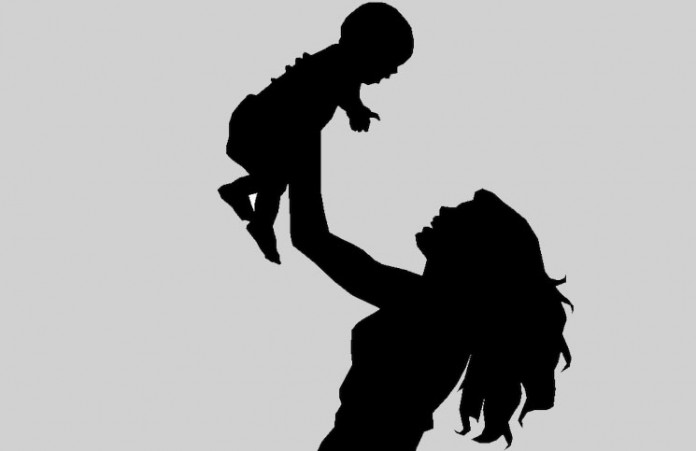
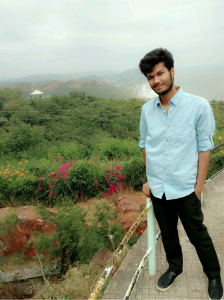







 Allow notifications
Allow notifications



